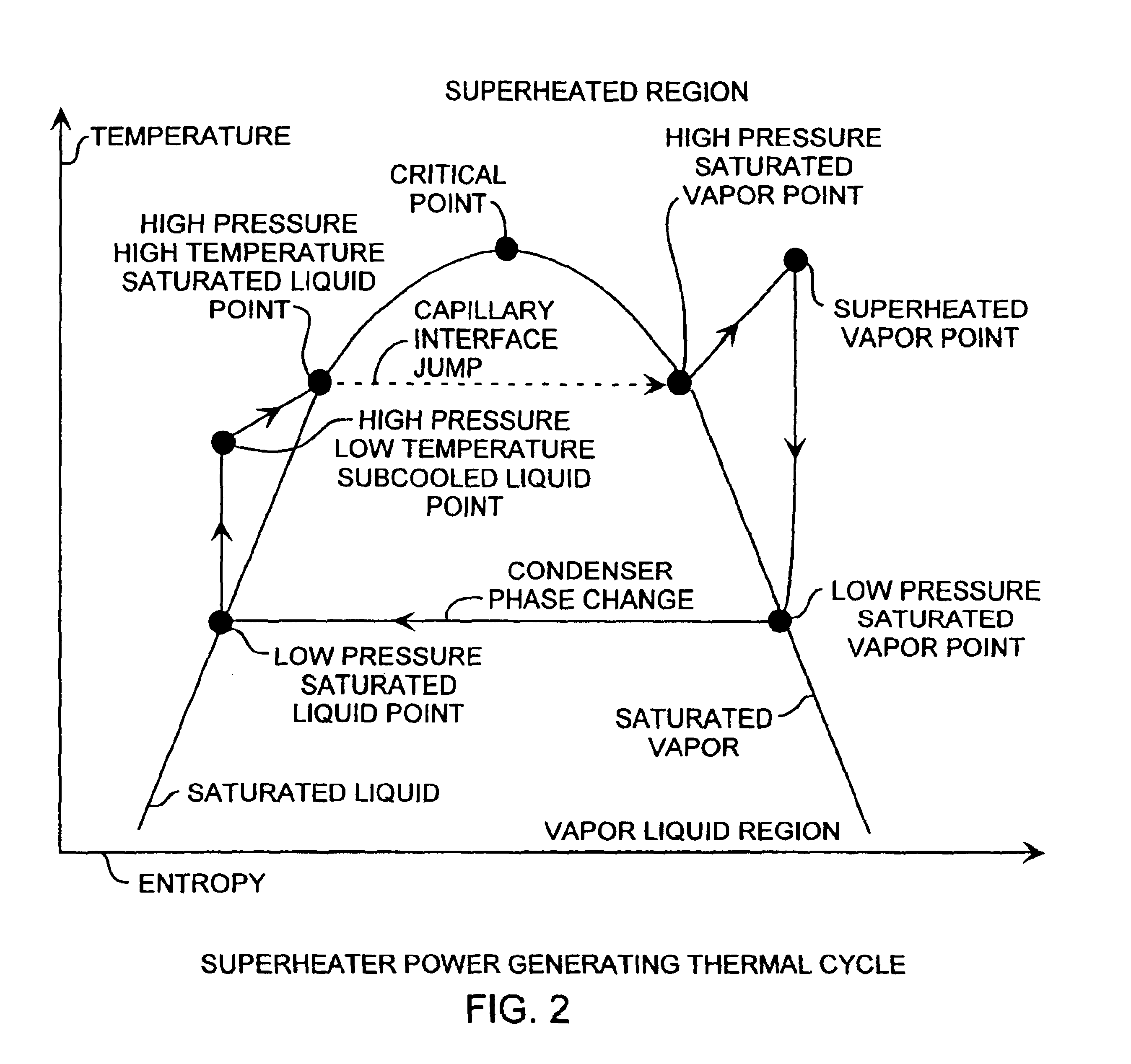Superheater capillary two-phase thermodynamic power conversion cycle system
a two-phase thermodynamic power conversion and superheater technology, applied in steam superheaters, steam engine plants, lighting and heating apparatus, etc., can solve the problems of inability to use rankine power cycles in space applications, inability to achieve infinitesimally small changes in flow quality, and inability to achieve the effect of large-scale operation, improved efficiency, and effective separation
- Summary
- Abstract
- Description
- Claims
- Application Information
AI Technical Summary
Benefits of technology
Problems solved by technology
Method used
Image
Examples
Embodiment Construction
[0032]An embodiment of the invention is described with reference to the figures using reference designations as shown in the Figures. Referring to FIG. 1, a two-phase thermodynamic power system includes a capillary device, a superheater, an inline turbine, a condenser, a liquid pump and a liquid preheater for generating output power. The capillary device, such as a loop heat pipe or a capillary pumped loop, is coupled to an accumulator that is coupled to the superheater. The capillary device includes a capillary wick and a container, combined to make an evaporator. The capillary device is driven by a capillary heat source. The capillary device provides high-pressure saturated vapor through a high-pressure vapor path to a preferred vapor accumulator that is in turn connected to the superheater. The superheater includes a plurality of unidirectional diode valves, such as valves A, B, and C, that are respectively connected to a plurality of heating chambers, such as chambers A, B, and ...
PUM
 Login to View More
Login to View More Abstract
Description
Claims
Application Information
 Login to View More
Login to View More - R&D
- Intellectual Property
- Life Sciences
- Materials
- Tech Scout
- Unparalleled Data Quality
- Higher Quality Content
- 60% Fewer Hallucinations
Browse by: Latest US Patents, China's latest patents, Technical Efficacy Thesaurus, Application Domain, Technology Topic, Popular Technical Reports.
© 2025 PatSnap. All rights reserved.Legal|Privacy policy|Modern Slavery Act Transparency Statement|Sitemap|About US| Contact US: help@patsnap.com



